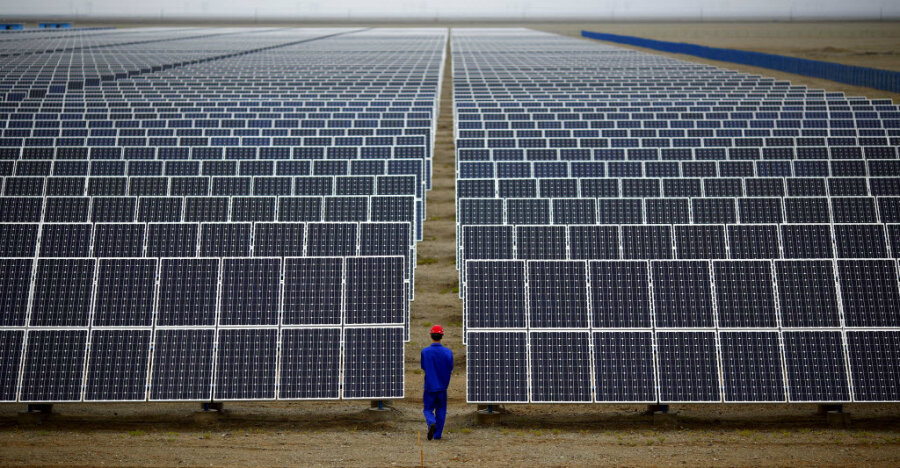Researchers discover how to mimic plants for solar production
Loading...
Researchers at Florida State University say they’ve developed a method that could make solar power cheaper by copying the process of photosynthesis used in plants.
A study published in the Journal of Physical Chemistry lays out a new technique that uses less material to capture sunlight, allowing it to to covert light into electricity at a faster rate.
Jose L. Mendoza-Cortes, an assistant professor of chemical engineering who co-authored the report, said this process also breaks down water into hydrogen and oxygen more easily. He said this is similar to plant photosynthesis, using sunlight to transmute water and carbon dioxide into carbohydrates and oxygen.
The new technique uses only a single layer of manganese oxide material, which could make solar production less expensive. And by mirroring nature, the process would not generate carbon dioxide or waste, according to Mr. Mendoza-Cortes.
“In theory, this should be a self-sustaining energy source,” he said. “Perhaps in the future, you could put this material on your roof and it could turn rainwater into energy with the help of the sun.”
Solar power makes up only one percent of the world’s electricity generation, and most of that comes from photovoltaic systems perched on roofs. But according to data cited from the International Energy Agency that also shows that number is beginning to grow rapidly.
The world already has doubled its solar capacity since 2010 with charge toward solar now led by China, Germany, Japan, and the United States, the IEA said.
As solar technologies get cheaper, those figures will continue to rise. One example cited in another government study said solar plants in Germany could now carry power for 9 cents per kilowatt-hour. Coal- and gas-fired plants do so at a rate of 5 to 10 cents, while nuclear power costs 11 cents to produce.
A study by the US Department of Energy, called the SunShot Initiative, found the price of solar technologies would drop by 75 percent in the country between 2010 and 2020. By 2030, the study projects, solar power will make up roughly 14 percent of the US energy market, largely due to advancements.
This will have a ripple effect, dropping carbon emissions, shrinking energy costs, and boosting jobs, the study predicts.
The picture isn’t entirely rosy. Many believe that solar power is still too expensive to generate even though more countries are moving ahead with investments. India is expected to launch an international solar initiative involving dozens of countries during this week’s climate summit in Paris.
Mendoza-Cortes said his experiment was initially involved more expensive procedures, but when he scaled back the number of layers of manganese oxide, also known as birnessite, he found it processed light quicker and at a lower cost.
The process makes better use of the light it brings because the silicon solar cells in the material are less dense. This makes the material more efficient because less material would need to be manufactured.
“It is cheap, it is efficient and you do not need a large amount to capture enough sunlight to carry out fuel generation,” he said.
[Editor's note: An earlier version misstated the university where the research was conducted. It was Florida State University. The Monitor regrets the error.]







